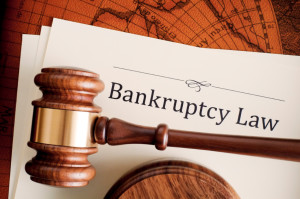The Meeting of the creditors isn’t something you should fear. Right after a person files for bankruptcy, the court does several things. First it issues a case number, which identifies your bankruptcy. Next it notifies your creditors by mail that you have filed a bankruptcy. Finally, it assigns a bankruptcy trustee to your case who schedules a hearing called the “First  Meeting of the Creditors.” This meeting is often a source of worry for debtors unfamiliar with the bankruptcy process. Fortunately, for the vast majority of consumer debtors filing Chapter 7 bankruptcy, the 341 hearing is a simple and relatively painless process that doesn’t need to be a source of concern.
Meeting of the Creditors.” This meeting is often a source of worry for debtors unfamiliar with the bankruptcy process. Fortunately, for the vast majority of consumer debtors filing Chapter 7 bankruptcy, the 341 hearing is a simple and relatively painless process that doesn’t need to be a source of concern.
Why Have a Meeting of The Creditors:
First, as its full name implies, its a chance for all the creditors to have a meeting with the debtor. For many, that sounds like they’ll be questioned by all the people to whom you owe money. In reality, this is practically never the case. Occasionally, a creditor unfamiliar with the process appears, or a secured creditor (like one holding a mortgage or auto loan) appears to ask a specific question, but even those appearances are fleetingly rare.
The second purpose is to convene the appointed trustee with the debtor and the debtor’s attorney. The trustee is an attorney appointed by the court to handle the day to day dealings of bankruptcies that don’t require the attention of either the Bankruptcy Judge, or the Federal Bankruptcy Trustee. In a Chapter 7, the trustee’s job is to determine if there is any non-exempt property that must be turned over to the bankruptcy court for sale and distribution to the creditors. He or she makes this determination after reviewing the debtor’s petition and after meeting with the debtor.
Don’t Fear The Meeting of Creditors:
The meeting is fairly simple. The debtor and their attorney arrive at the meeting. This meeting is usually in a conference room at the bankruptcy court. The debtor waits for the trustee to call them. They enter into a private room, or just to a table at one end of the conference room. In some jurisdictions, the trustee may even call more than one debtor at a time and conduct the meetings in groups. The trustee will place the debtor under oath, and ask to see the debtor’s driver’s license and social security card. It’s very important the debtor bring those two documents to the meeting. If you fail to bring them the trustee may reschedule the meeting to another date. After confirming the debtor’s identity, and that the social security number matches the one on the petition, the trustee will ask the debtor some questions.
Additional Concerns Aren’t a Problem:
In some cases, the trustee may have questions concerning taxes, real estate, or personal property. The trustee may address these questions to the debtor’s attorney or directly to the debtor. Occasionally, the trustee may ask the attorney to provide further information after the hearing, such as a tax return filed late, or ask for clarification about property or creditors. Once the trustee has asked the necessary questions, he will dismiss the debtor, ending the meeting.
The entire process usually takes just a few minutes. Sometimes the waiting period is shorter than the actual meeting. After the meeting, the debtor’s attorney may remind him or her to bring any additional documents necessary. Also, you receive a reminder to finish the second debtor education class. The 341 hearing meeting of the creditors may sound intimidating, but in reality, its quick and simple.
